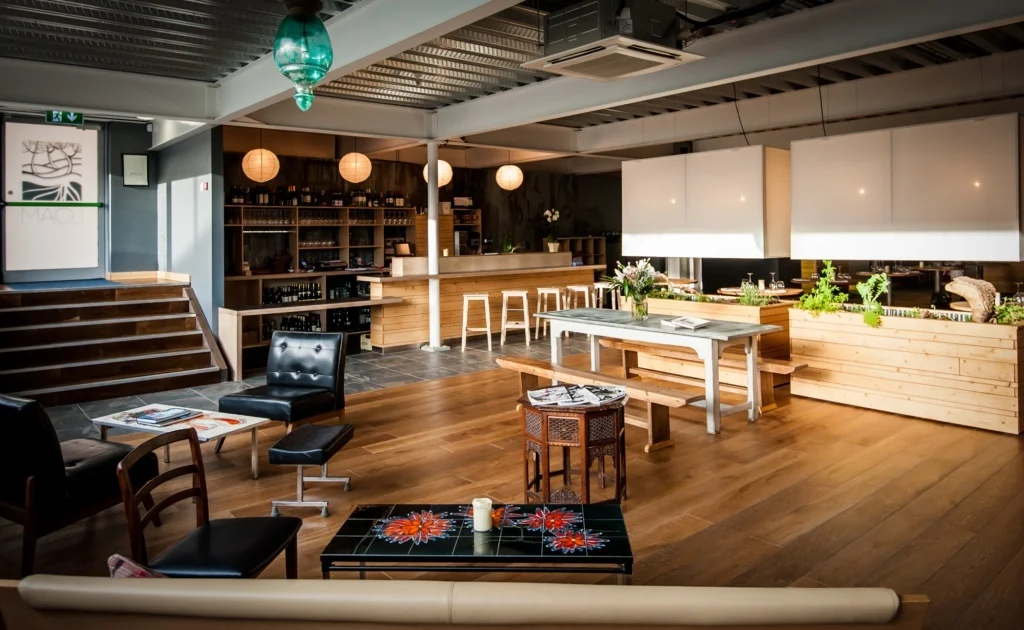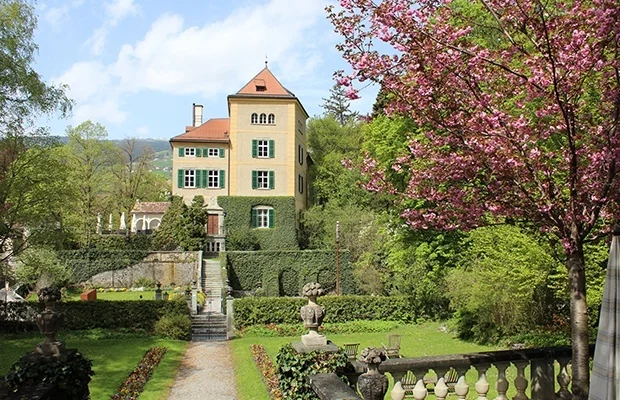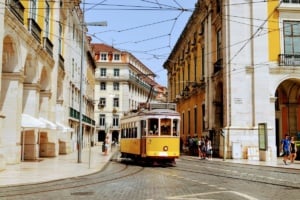One of the benefits of travel is it changes your perspective.
Traveling has made us more eco-conscious about what we do. We worry about the carbon footprint we leave, and if the food comes from local sources.
Seeing the lack of clean water and destruction of forests around the world, we have become more environmentally aware than we have ever been. We have seen entire villages suffer because of the perma-frost has melted and that was their only source of refrigeration.
We live in an area that red tide and blue algae are yearly problem mainly due to runoff from sugar plantations and homes of pesticides and fertilizers.
And we watch in amazement when many people seem not to care. That somehow it is all normal. We want to leave this planet better off than before.
We want to insure that our children, and grandchildren and their children will have the same opportunities that we have had. Already in our lifetime we have seen the destruction of wild places, and over-hunting, over-fishing and over-tourism that plagues many parts of the world.
On the other hand, we have seen some remarkable advances from countries you would least expect. Solar power being used in Africa. Wind Power throughout Europe. And Sustainable Restaurants in rural areas of Peru. Many parts of the world, through necessity, are leading the charge with sustainable living leaving many parts of the throw-away and wasteful US behind.
Sustainable restaurants are something that many people have not heard of, let alone experienced. Sustainability is broken down into three pillars, namely Environmental, Economic and Community. I will explain those at the end of this article in more detail.
We have put together a list of some wonderful, sustainable restaurants that you will want to try and support when traveling.
Azurmendi – Larrabetzu, Spain, Europe
This impressive sustainable restaurant is both a feast for the stomach and eyes.
Azurmendi restaurant is integrated into the hillside surrounded by vineyards in the picturesque town of Larrabetzu, Spain.
The greenhouse-like structure focuses on contributing to the 17 Sustainable Development Goals put out by the Sustainable Development of the United Nations for the 2030 Agenda. Some of these include sharing wealth and knowledge to eliminate inequalities, using sustainable marine resources, implementing actions to combat climate change, and using sustainable energy.
Visitors to Azurmendi also have the option to take a small tour around the property to be educated on the restaurant’s rainwater usage, solar panels, temperature control, and how the restaurant is able to grow fresh vegetables and spices year-round. Azurmendi’s dedication to sustainability was awarded in 2018 and 2019 when they received accolades for sustainability by the Sustainable Restaurant Association.
Environmental: Grows own produce, compost, upcycles, reduces waste, utilizes renewable energy.
Economic: Sourcing produce from local farms.
Community: Educating community members on sustainable practices.
Awards: The Sustainable Restaurant Award 2014 & 2018 from The World’s 50 Best Restaurant
Loam: Galway, Ireland
Loam restaurant is located in Galway, Ireland and is notorious for their modern take on traditional food.
The owners, Head Chef Enda McEvoy and Sinead Meacle, were among the first established restaurants in Ireland to build close relationships with and source from local organic farmers.
This approach was pivotal in the world of sustainable eateries, and paved the way for many other small businesses to follow in Loam’s footsteps. Loam has since continued on with their approach to sustainability by working to reduce waste, upcycle, compost, and use renewable energy.
The owners also cater their menu to reflect which produce is currently available during any given season. This aids in lowering their environmental footprint due to the fact that in-season produce can be locally sourced whereas out-of-season produce needs to be transported into the area; which can lead to an increase in carbon dioxide emissions.
In terms of community involvement, Loam hosts cooking demonstrations to educate the community youth on the basics of cooking and sustainability. Their overall efforts have paid off by garnering a significantly large sustainable reputation within the community and throughout the rest of Ireland. Since their humble beginnings in 2014, Loam has been awarded a Michelin star for sustainability and the Best Restaurant in Ireland award by the Restaurant Association.
Environmental: Limit waste, compost, recycles, renewable energy.
Economic: Locally sourced produce
Community: Hosts cooking demonstrations for community youth in conjunction with Slow Food Ireland
Awards: Best Restaurant in Ireland by the Restaurant Association & a Michelin star for sustainability.

Inside Loam Restaurant
Relæ – København, Denmark, Europe
Relæ is the perfect place to visit if you find yourself roaming the streets of København, Denmark.
This remarkably sustainable restaurant is renowned for the attention to detail that fully encompasses all three pillars of sustainability. From the interior design that emulates minimalism and zero-waste products to the food that is 90%-100% sourced from biodynamic farms. Relæ even reuses the leftover drinking water to clean the restaurant at the end of the day.
Their dedication is impressive, with the chefs driving every morning to a farm in the remote town of Nørrebro to harvest vegetables and collect fresh milk. The restaurants hard work has paid off by winning a Sustainable Restaurant Award two years in a row back in 2015 & 2016. Their environmentally mindful approach captivates newcomers and their modern take on traditional Danish keeps them coming back for more.
Environmental: Reduced water consumption, reduced waste, renewable energy.
Economic: Sources produce locally, participates in Fairtrade purchases for non-locally sourced goods
Community: Prices food low so that the restaurant is more accessible to lower-income individuals
Awards: Sustainable Restaurant Award 2015 & 2016 Awarded by The World’s 50 Best Restaurants
Schloss Schauenstein in Fürstenau, Switzerland
Schloss Schauenstein is a must see if you are visiting Fürstenau, Switzerland.
Located in a quaint hotel in the Swiss countryside, the fairy tale setting alone is enough to impress visitors. Upon visiting the manor, guests will automatically notice how integrated the environment is into the estate. The restaurant takes pride in sourcing roughly 30% of their food from its private orchards and gardens. Head chef, Andreas Caminada also works closely with local organic farmer Marcel Foffa, whose greenhouses and vegetable farms are located within just a mile of the restaurant. In addition, Schloss Schauenstein recycles, composts, and runs off of 100% renewable energy.
The restaurant even founded Fudaziun Uccelin in 2015, a foundation aimed at educating young community members and to “foster ambitious chef and service talents within the gastronomic industry with the long-term goal to secure highly skilled and passionate professionals”.
Environmental: Rarely serves meat, sources produce from castle grounds, reduces energy consumption, no-food-waste policy
Economic: Sources locally aiding in the multiplier effect
Community: Founded the Fundziun Uccelin foundation
Awards: The Sustainable Restaurant Award 2019 from The World’s 50 Best Restaurant
Le Manoir aux Quat’Saisons in Oxfordshire, England, Europe
The last sustainable restaurant on our list is located in 15th century manor in the quaint town of Oxfordshire, England.
Le Manoir aux Quat’Saisons was opened 35 years ago by the President of the Sustainable Restaurant Association, Raymond Blanc. This French-style eatery obtained two Michelin stars within just a year of operation; and has maintained their status in the decades since. In addition to this massive accomplishment, Le Manoir aux Quat’Saisons is notoriously sustainable.
The hotel sits upon acres of gardens that are home to a whopping 90 types of vegetables and 70 types of herbs. This fresh produce is incorporated into the everchanging seasonal menu alongside locally sourced meat and dairy. In addition, the establishment follows other sustainable practices such as using renewable energy, working to reduce waste and reducing water consumption.
Environmental: reduces waste, lowering water consumption, grows own herbs and vegetables
Economic: sources meat from local farms in order to aid in multiplier effect
Community: Educates community of sustainability and farming

Outside Le Manoir aux Quat’Saisons Restaurant.
Kati and I have been composting, we grow our own tomatoes and herbs. We have planted Spanish Olive Trees and Grape Vines in the back that will someday hopefully provide us with a bounty. We want to do our part. One of the biggest reasons is we see how much waste we have when we eat out or buy from the store.
We want that fresh taste and feel good about growing what we can. And when we travel, we want to make sure that we are supporting the local economy and supporting people that feel the same way as we do. Look in your home town, and check to see if there are any sustainable restaurants near you. You will be helping out the local community and probably a small business at the same time.
What Makes A Restaurant Sustainable?
The term sustainability can best be defined but it’s three pillars: Environment, Economic, and Community. These three pillars work in unison, and together have the power to create sustainability for a given area or business. That being said, though different organizations will have differing requirements, the true meaning of sustainability often lies within accomplishing -or working to accomplish- at least a part of each three pillars.
Environment Pillar: The environmental pillar can be accomplished via a wide range of practices.
Utilizing renewable energy when possible via solar, geothermal, biofuel or even wind power all can aid significantly in reducing a restaurants environmental footprint. Other environmental approaches that sustainable restaurants take is to limit overall waste by being mindful of where produce is sourced, composting leftovers, recycling, and working to educate staff on these environmental practices so that they are better educated on the subject.
An additional practice that is often implemented in sustainable restaurants is organic produce. Though the public perception is strongly in agreeance that organic agriculture is the more sustainable and healthier option, scientific literature is rather torn on this topic due to the negative and positive results regarding the use of organic practices.
Though organic farming can be beneficial on the local eco-system due to the lack of pesticide use, researchers have found that in order to gain the same crop-yield as non-organic produce, the organic produce needs to use more land, which can ultimately lead to emitting more greenhouse gasses. In addition, for certain countries where the climate isn’t the best suited for organic farming -such as England- organic produce needs to be shipped in, which in turn leads to more fuel, labor, and carbon dioxide emission.
The current scientific literally on organic produce and human health is surprisingly sparse.
All of that being said, organic produce is widely used in sustainable restaurants due to its perceived -and to an extent scientifically- backed sustainability benefits. Even though the topic of organic agriculture is rather controversial amongst many bioengineers and scientist, it is agreed to be acceptable if done under heavily regulated rules such as with the European Union.
https://pubmed.ncbi.nlm.nih.gov/27930955/
https://pubmed.ncbi.nlm.nih.gov/29062017/
https://pubmed.ncbi.nlm.nih.gov/31861431/
https://pubmed.ncbi.nlm.nih.gov/27992727/
Economic Pillar: The multiplier effect is a term used to define when money is circulating within a localized economy. An example of this would-be sourcing produce from farms within the same city, region, or country from the local business. Buying from large corporations can have a negative effect on the sustainability of a community because a patron’s money is now leaving that economy and ending up in the headquarters of that large business. For example, if an individual living in England buys coffee from Starbucks, the majority of that money spent is now leaving the English economy for the USA where the Starbucks headquarters is located. Now if that same individual were to purchase coffee from a local coffeeshop, their money goes straight to the employees and owners that live in the area who can then take that money and use it at another local business, creating a cycle of money circulating within a local economy. This phenomenon is a highly sustainable approach to take for restaurants looking to participate in eco-friendly practices.
https://www.ncbi.nlm.nih.gov/pmc/articles/PMC3428591/
Community Pillar: The community pillar and economic pillar are rather similar and can both benefit off of the aforementioned multiplier effect. Other ways that restaurants can practice community sustainability is by volunteering, teaching skills to community members, donating money to benefit the community, and even starting a foundation. Another important, but less common, sustainability approach for restaurants to take is advocating for equality amongst community members regardless of socio-economic, ethnic, or religious backgrounds. Some local business does this using their community standing for hosting fundraisers, informational sessions, or even protests when a serious disregard for equality rises.
Practicing every single one of the aforementioned approaches is not necessary in order to make a business sustainable. Some restaurants are unable to practice certain approaches due to their location, employee size and even income. That being said, business should at least try to practice one approach from each pillar in order to be considered sustainable.
https://www.ncbi.nlm.nih.gov/pmc/articles/PMC3428591/
https://pubmed.ncbi.nlm.nih.gov/26401544/
Related Posts
I weep for America
I woke up this morning feeling a sense of doom in the world. I feel that I do not even know the country that I live in any longer. As someone that travels throughout the world and tries to make connections with the people and wildlife that I come across, it was incredible that America elected someone like Donald Trump. It is incredible that people would vote against their own best interest and seem to be happy about it. It is incredible how many racist, misogynistic and uneducated people there are in America.
Conservation Champions: 5 Exemplary Wildlife Preservation Efforts Making a Difference
Conservation Champions highlights five remarkable wildlife preservation efforts that are truly making a difference. From protecting endangered species to restoring habitats, these initiatives showcase the dedication and innovation of individuals and organizations committed to safeguarding our planet’s biodiversity. Discover the inspiring stories behind these exemplary conservation projects and the impact they have on our natural world.
Beyond the Big Five: Discovering Wildlife Wonders in Non-African Safari Destinations
“Beyond the Big Five” takes you on a thrilling journey to lesser-known safari destinations outside of Africa. From the lush rainforests of the Amazon to the vast plains of the Pantanal in South America, this article uncovers the hidden treasures of wildlife wonders that await adventurous travelers seeking a unique and unforgettable safari experience.











0 Comments